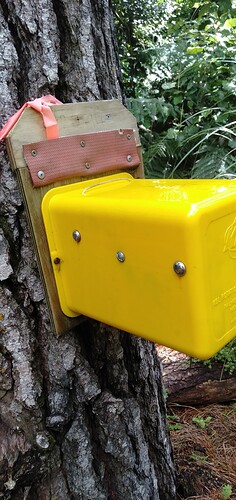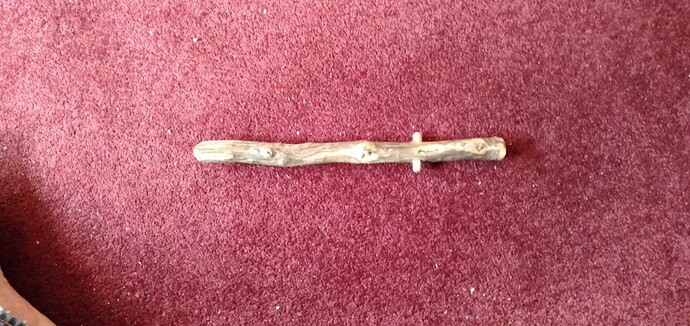If you haven’t tried it before, I recommend giving your apple pieces a coating of cinnamon. It keeps the apple moist far longer than when it’s bare, because it reduces the evaporation-rate, and possums are big fans of cinnamon. Flour blazes with cinnamon in them give possums a sample. My kill-rates increased significantly when I made the switch, and I don’t have to re-lure the traps as frequently. Also, the cinnamon deters insects and invertebrates, and rodents definitely prefer apples that aren’t coated. I read an article recently by a possum trapper, and discovered that I’d been using pieces of apple that were far too big, the wrong shape, and skewered incorrectly. Rectangles about the size of your thumb, skewered horizontally is the way to do it, apparently (as another poster stated).
If you trap cats with your Timms, a lure that I’ve found to be very attractive is a piece of firm pork fat that has been dipped in white vinegar, which acts as a preservative, a scent lure, and keeps insects away for some time. With ants, the usual delay is around 2 days, and it’s hard for them to eat it. The fat is too tough for blowflies to lay eggs in it, which is a big problem for me when I use flesh lures.
As it dries, the fat adheres to the skewer tightly, unlike most meat lures, so you don’t have to worry about it sliding down. Because it stays put, cats have to really sink their teeth into the fat and give it a good pull to try it. Instead of nibbling away at my normal lures, I’ve trapped 3 large brown rats using vinegar pork, and I wouldn’t be surprised to trap a mustelid this way.
When I first tried the lure, I was worried that cats wouldn’t like the vinegar, but I trapped 2 of them within a few days of luring the traps, so the taste and smell of the vinegar should have still been detectable.
The fat lure treated with vinegar lasts way longer than untreated lures, which can start to smell bad quite quickly, so they’re worth a go if you can’t check your traps that often. A pack of cheap pork cuts will give you quite a few lures, because they don’t have to be very big - about the size of the end of your thumb. Like apple pieces, make them rectangular. In order to skewer the pork, you need to make an X with a knife through the tough fat, which can be tricky and risky, so be careful! I make a bunch of them at once, and then freeze the rest.
Good trapping!


